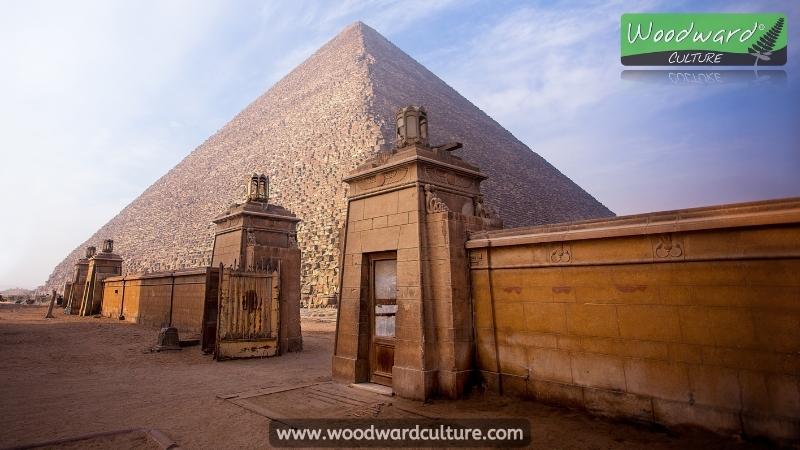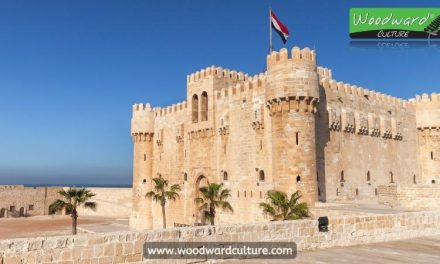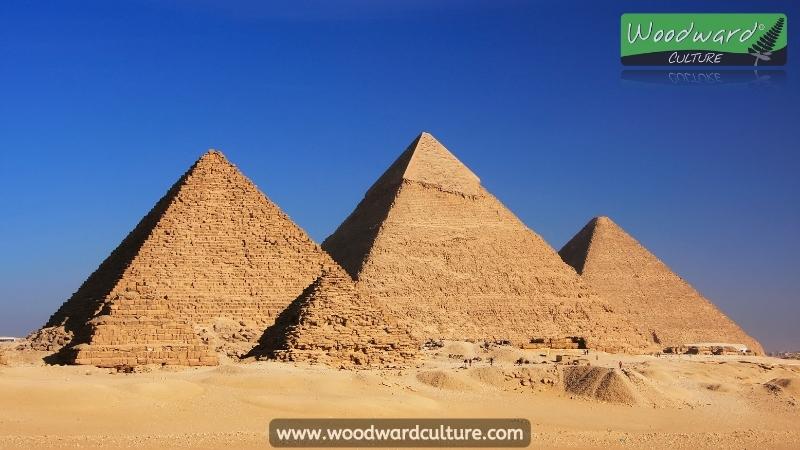
The Pyramids of Giza, one of the Seven Wonders of the Ancient World, stand proud against the backdrop of the Sahara Desert, inviting travelers to unlock the mysteries concealed within their majestic structures.
Great Pyramid of Khufu (Cheops)
The Great Pyramid of Cheops, also known as the Pyramid of Khufu, is the largest and most iconic of the three pyramids on the Giza Plateau. Built during the Fourth Dynasty of the Old Kingdom of Ancient Egypt, around 2580–2560 BCE, it was constructed for Pharaoh Khufu (Cheops), who reigned for approximately 23 years.
Here are some key features and fascinating details about this remarkable structure:
Dimensions:
The Great Pyramid originally stood at 146.6 meters (481 feet), making it the tallest man-made structure for over 3,800 years. It consists of an estimated 2.3 million limestone blocks, each weighing between 2.5 and 80 tons. The precision with which these massive stones were cut and arranged is a testament to the engineering prowess of the ancient Egyptians.
Construction Techniques:
The exact methods used to construct the Great Pyramid remain a subject of debate among historians and archaeologists. Theories range from the use of ramps, levers, and counterweights to suggestions of internal spiral ramps. The precision of the pyramid’s alignment with the cardinal points is also a testament to the advanced astronomical knowledge of the ancient Egyptians.
Casing Stones:
Originally, the Great Pyramid was encased in smooth, white Tura limestone casing stones. These highly polished stones reflected sunlight, giving the pyramid a dazzling appearance and making it shine like a “gem” in the desert. Most of these casing stones have since eroded or were removed over the centuries.
Interior Structure:
The pyramid has three main chambers: the King’s Chamber, the Queen’s Chamber, and an unfinished subterranean chamber. The King’s Chamber contains the granite sarcophagus believed to have held Khufu’s remains, though no mummy has been found. The purpose of the other chambers remains a subject of speculation and mystery.
Pyramid of Khafre (Chephren)
The Pyramid of Khafre, also known as the Pyramid of Chephren, is the second-largest of the three pyramids on the Giza Plateau, located near Cairo, Egypt. It is named after Pharaoh Khafre (Chephren), who was the son of Khufu, the builder of the Great Pyramid. The Pyramid of Khafre is notable for its distinctive features and its connection to other structures on the Giza Plateau.
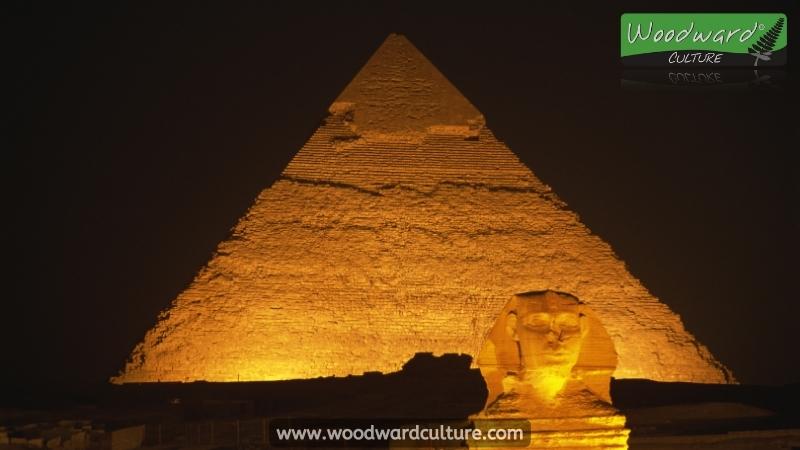
Here are some key aspects of this fascinating pyramid:
Dimensions:
The Pyramid of Khafre stands at a height of 136.4 meters (447.5 feet), making it slightly smaller than the Great Pyramid of Khufu. It appears taller when viewed from a distance due to its higher elevation on the plateau.
Granite Casing Stones:
Like the Great Pyramid, the Pyramid of Khafre was originally encased in Tura limestone casing stones. Some of the casing stones at the top of the pyramid still remain, providing a glimpse of the original outer layer. Additionally, the pyramid features granite casing stones near its apex.
Valley Temple and Sphinx:
Adjacent to the Pyramid of Khafre is the Valley Temple, a complex made of massive limestone blocks. This temple was likely used for the purification of the pharaoh’s body before burial. The causeway from the Valley Temple connects to the Mortuary Temple near the pyramid.
The Great Sphinx of Giza, with the body of a lion and the head of a pharaoh (often identified as Khafre), is located in front of the Pyramid of Khafre. The Sphinx is believed to guard the necropolis and has been a subject of much speculation and intrigue.
Mortuary Temple:
The Pyramid of Khafre is associated with a Mortuary Temple situated along the east side of the pyramid. This temple was dedicated to the cult of the pharaoh and served as a place for rituals and offerings. The temple’s granite pillars and remnants of statues provide insights into ancient Egyptian architectural and artistic styles.
Burial Chamber:
The internal structure of the Pyramid of Khafre consists of a burial chamber with a red granite sarcophagus, similar to the arrangement in the Great Pyramid. However, no mummy was found in Khafre’s burial chamber, raising questions about the actual burial location of the pharaoh.
Pyramid of Menkaure
The Pyramid of Menkaure is the smallest of the three main pyramids on the Giza Plateau. It is the southernmost pyramid among the trio, standing alongside the larger pyramids of Khufu (Cheops) and Khafre (Chephren). Menkaure’s Pyramid is associated with Pharaoh Menkaure, who ruled during the Fourth Dynasty of the Old Kingdom. While smaller in scale compared to the other Giza Pyramids, it remains an important archaeological and historical site, contributing to our understanding of ancient Egyptian funerary practices and architectural achievements.
Here are some key details about the Pyramid of Menkaure:
Dimensions:
The Pyramid of Menkaure originally stood at a height of around 65 meters (213 feet). It is significantly smaller than the nearby Pyramids of Khufu and Khafre. Despite its size, the pyramid has its own unique charm and historical significance.
Construction Material:
Like the other Giza Pyramids, the core of Menkaure’s Pyramid was constructed using limestone blocks. The pyramid was originally encased in Tura limestone, much like its larger counterparts, but most of the casing stones have gone.
The Gash – Missing Blocks on the North Face:
In the year 1196 AD, Al-Aziz Uthman, the son of Saladin and the Sultan of Egypt, made an attempt to dismantle the pyramids, beginning with the one belonging to Menkaure. The workers enlisted for the demolition spent eight months trying to remove all of the blocks of the pyramid, only to discover that the process was nearly as costly as the original construction. The task proved to be highly challenging, with the workers managing to remove just one or two stones per day and eventually attempts were abandoned.
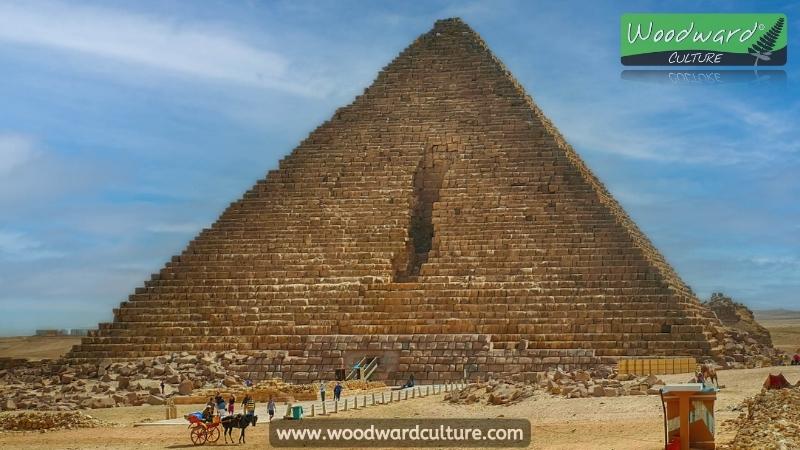
Mortuary Temple:
The Pyramid of Menkaure is associated with a Mortuary Temple on the east side of the pyramid. This temple served as a site for various rituals, including offerings to honor the deceased pharaoh. The Mortuary Temple of Menkaure has a distinctive design, featuring an entrance colonnade and an open courtyard.
Subsidiary Pyramids:
Adjacent to the Pyramid of Menkaure are three smaller pyramids, commonly referred to as the Queen’s Pyramids. These subsidiary pyramids are believed to be the burial places of Menkaure’s queens. Each of these smaller pyramids has its own Mortuary Temple.
Granite Casing:
The uppermost portion of Menkaure’s Pyramid features granite casing stones. These stones were used to clad the apex of the pyramid, adding a touch of grandeur to the structure. Some of these granite casing stones still remain in place today.
Interior Structure:
The internal structure of the Pyramid of Menkaure consists of three chambers, including a burial chamber with a granite sarcophagus. The burial chamber is accessible through a descending corridor. Unlike the Great Pyramid, Menkaure’s Pyramid has no ascending passageways.
The Sphinx
The Sphinx of Giza is an iconic and enigmatic monument situated on the Giza Plateau. Carved from the natural limestone bedrock, the Sphinx is a colossal statue with the body of a lion and the head of a pharaoh.
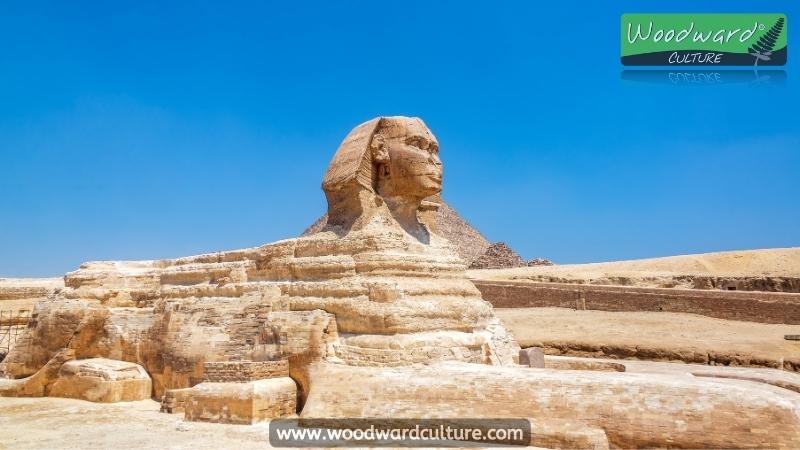
Here are some key details about this ancient and mysterious monument:
Sphinx Dimensions:
The Sphinx is an impressive structure, standing at a length of about 73 meters (240 feet) and reaching a height of approximately 20 meters (66 feet). It is the largest monolith statue in the world.
Sphinx Construction Date:
The exact date of the Sphinx’s construction is a subject of debate among historians and archaeologists. It is generally believed to have been built during the reign of Pharaoh Khafre (Chephren), who is also associated with the nearby Pyramid of Khafre. This places the Sphinx’s construction around 2500 BCE, during the Fourth Dynasty of the Old Kingdom.
Purpose of the Sphinx:
The purpose of the Sphinx remains a matter of speculation. Some theories propose that it served as a guardian figure, protecting the Giza Necropolis and the pyramids. Others suggest a more symbolic role, representing the king’s divine power and authority. The Sphinx is aligned with the causeway leading to the Pyramid of Khafre, creating a connection between these two structures.
Face of the Sphinx:
The face of the Sphinx is commonly believed to represent Pharaoh Khafre, the builder of the nearby Pyramid of Khafre. The facial features, including the traditional pharaonic beard, align with the artistic conventions of the time. However, the original face of the Sphinx has eroded significantly due to weathering, particularly from wind and sand. Many of the original features have been lost over time.
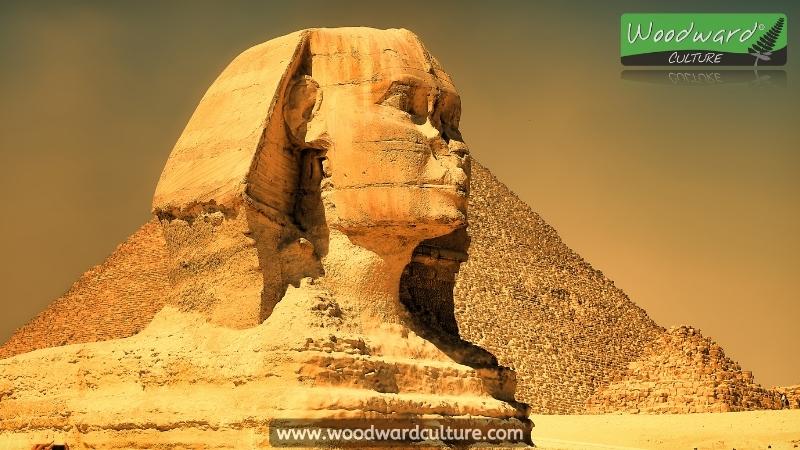
Dream Stele:
Between the paws of the Sphinx, a granite slab known as the “Dream Stele” or “Sphinx Stele” was discovered. It bears an inscription by Pharaoh Thutmose IV, who claimed to have dreamt that the Sphinx promised him the throne if he cleared the sand that had accumulated around it. Thutmose IV later became pharaoh, and the stele commemorates his actions.
Symbolism of the Sphinx:
The Sphinx holds significant symbolic value in ancient Egyptian culture. It is often associated with the solar deity and considered a representation of royal power and protection. The human face on a lion’s body may symbolize the fusion of intelligence and strength.
Map of the Pyramids of Giza Complex
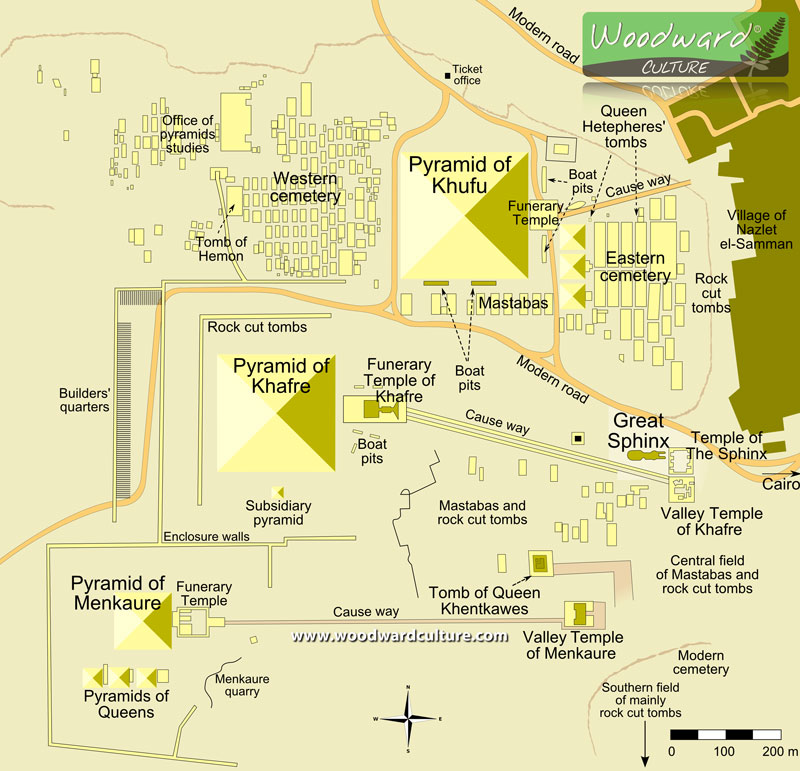
Tips for Visitors to the Pyramids of Giza
- Time of Visit: The best times to visit are during the cooler months from October to April to avoid the scorching heat.
- Guided Tours: Engage a knowledgeable guide to unravel the historical and cultural significance of these ancient wonders.
- Tickets: Purchase tickets in advance to avoid long queues at the entrance.
- Dress Comfortably: Wear comfortable clothing, a hat, and sunscreen to protect against the sun.
- Cultural Sensitivity: Respect the cultural and historical importance of the Pyramids by adhering to guidelines and avoiding any disrespectful behavior.
